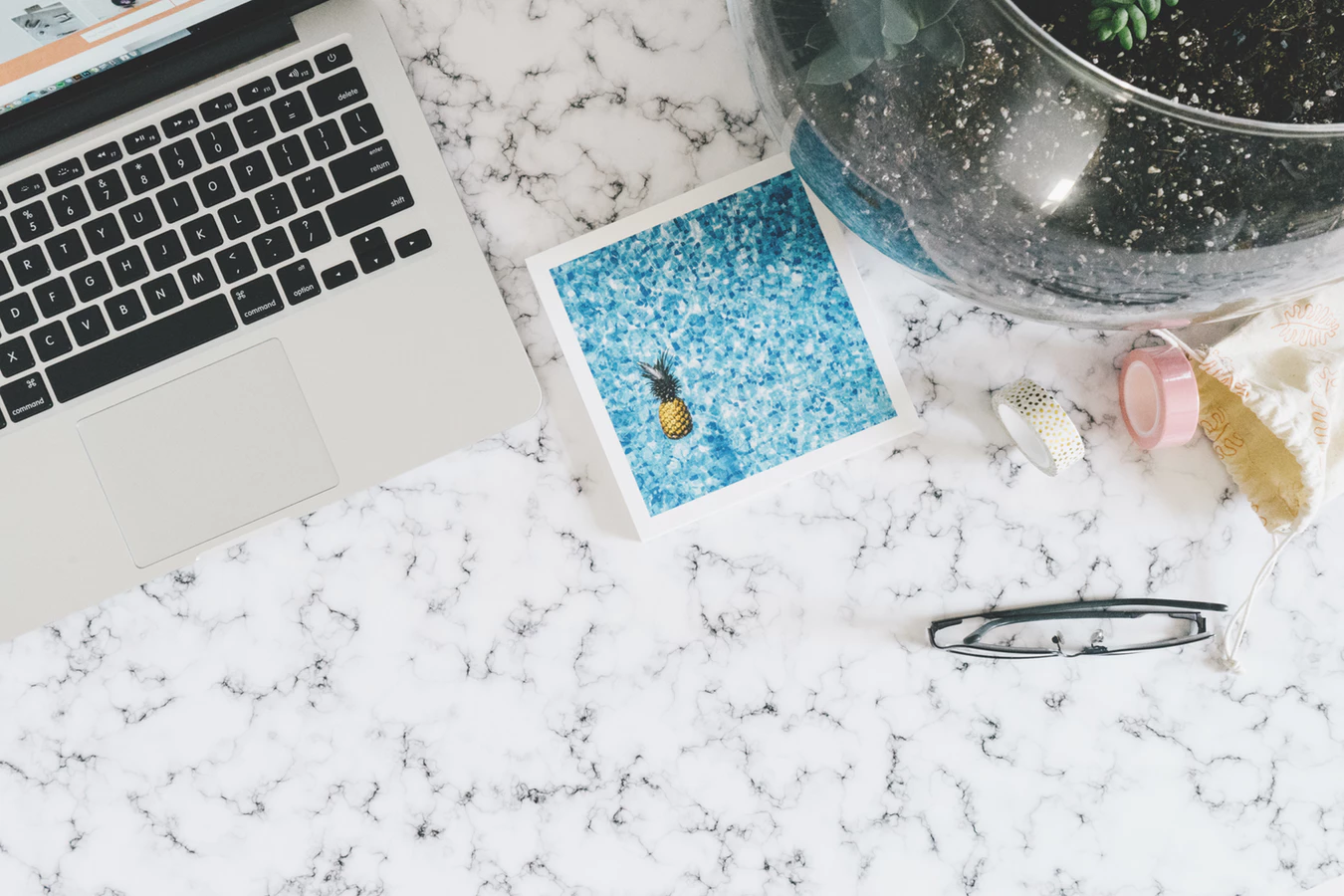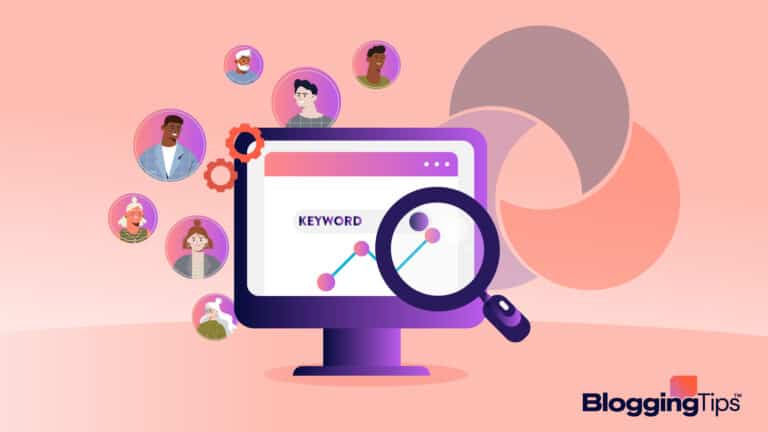Is there anything better than having your own successful, profitable lifestyle blog?
Lifestyle blogs can be rewarding, exciting, and fulfilling.
Unlike other niches like fashion or travel, lifestyle blogs allow you to write about your multiple passions in one place.
A lifestyle blog is an excellent choice if you have more than one passion, or you’d like to build a blog around the way you live.
With a lifestyle blog you can write about your interests in any mix you want, to create something that’s truly unique.
If you’ve thought about starting a lifestyle blog, we’re here to help.
Here is our step-by-step guide to help you start a successful blog today.
- Step One: Decide What to Blog About
- Step Two: Name Your Blog
- Step Three: Register Your Domain Name
- Step Four: Set Up Web Hosting
- Step Five: Install a Content Management System
- Step Six: Design Your Blog
- Step Seven: Create Content for Your Lifestyle Blog
- Step Eight: Set Up Social Media
- Step Nine: Launch Your Blog
- Step 10: Review Website Performance
- Other Essential Blogging Tips
- Frequently Asked Questions
- Blogging Tips for Lifestyle Bloggers
Step One: Decide What to Blog About
The very first step before you start any blog is to decide what you want to write about.
When it comes to blogging, the possibilities are endless.
This is especially true with lifestyle blogs.
The beauty of starting a lifestyle blog is that you can write about different topics that you care about, and create a blog around your own individual passions.
Popular topics for a lifestyle blog include travel, food, interiors, style, and beauty, but you can build your blog with your own interests in mind.
Many lifestyle bloggers enjoy the versatility that comes with it, and the flexibility to write about what inspires you at that very moment — even if it’s a topic you’ve never written about until now.
Should You Have a Niche?
While lifestyle blogging is a niche within itself, consider how you can “niche down” further to create a blog that truly stands out.
Do you write about life as a 20-something as you travel the world solo?
Or maybe you want to blog about your minimalist lifestyle and how that inspires your everyday life?
The key to starting a successful lifestyle blog is to be true to yourself, and let your personality shine through in your content.
There’s only one you, and that’s the best niche you can have.
Not Sure What to Blog About?
If you’re not completely sure what you want to blog about, that’s okay.
One of the best things about lifestyle blogs is that they’re not bound by one particular interest, so you’re free to experiment with blogging about different topics.
- What are you good at?
- What do you enjoy doing?
- What’s important to you in life?
- What are your big goals?
- What do you talk about most with friends and family?
- What inspires you to be creative?
- If you could have a dream job, what would it be?
- Who are you inspired by?
The answers to these questions should give you some valuable insight into yourself, and provide you with plenty of ideas on which blog topics you can write about.
Step Two: Name Your Blog
Once you know what you’d like to write about, the next step is to get creative and find a name for your new lifestyle blog.
This step might take some time, but it’ll be worth it — the right blog name can motivate you and make it easier to reach your goals.
How to Find Your Perfect Blog Name
Often your blog name will spring into your mind and feel “right.”
It might come to you when you’re on a walk, or jump out at you from a list of words you’ve written down.
You might even find your blog name through a friend, or a nickname.
To help you get inspired and find the right name for your blog, try our list of 11 great tips to help you find a creative blog name.
These activities will help you to gather ideas and create a blog name that represents you perfectly.
Points to Consider When Naming Your Blog
When it comes to finding a name for your blog, you can go wild and be creative.
Before you settle on a name, however, here are a few things to consider:
- Is the name or phrase trademarked or under copyright? (In the U.S. you can search for trademarks online)
- Does it sound too similar to another blog, especially within your niche?
- Is it easy to say out loud?
- Does it look right when written down or in a domain name/URL?
- Could it be considered offensive or limit your opportunities to earn an income?
Lastly, you’ll want to check that the domain name for your chosen blog name is available. You can do this quickly and easily at Bluehost.

Step Three: Register Your Domain Name
Now that you’ve found the perfect name for your blog, you’re well on your way to starting a lifestyle blog.
The next step is to register your domain name. This is the web address that your readers will visit to access your content — think of it like a street address for a business.
It’s important that your domain name relates to your blog name. The best option is to have yourblogname.com, as it’s easy to remember and also means nobody else can register it and confuse your readers.
Where to Register Your Domain
There are lots of websites where you can buy a domain online, but we recommend Bluehost.
As well as being a great web hosting company (more on that later), they also offer value for money when it comes to domain names.
What If My Domain Name Isn’t Available?
As blogging becomes more popular and more websites are created, you might find that your chosen domain name is unavailable. If this happens, there are a few things you can do:
- See if the domain name is available to buy through auction, or through the existing owner (although this may be expensive, in the region of several thousand dollars)
- Modify your domain name slightly, for example you could add a prefix like “the” or “a”
- Choose a different domain name extension, like .co
If you’re still not sure about which domain name to choose, you could always opt for your name.
This is a popular choice for lifestyle bloggers as it allows you more freedom to change the topic of your blog.
Step Four: Set Up Web Hosting
Once you’ve decided on a name for your blog, and bought your domain name, it’s time to invest in web hosting.
Every blog needs to be hosted somewhere, and web hosting acts as a place for your blog to exist online.
Your content will be “hosted” on a server, and served up to visitors when they land on your website.
Our Recommended Host for Bloggers
With so many web hosting companies out there, it can be hard to know who to sign up with.
We’ve compared lots of web hosts including GoDaddy, HostGator, and Dreamhost, and our favorite remains Bluehost.
Bluehost offers a great quality of service at an affordable price, with a discount if you sign up for a longer period at the start.
It’s easy to start and manage a blog with Bluehost, and we’ve always been impressed with their support, too.
Which Type of Hosting Do You Need?
If you’re starting a blog, we recommend you start small and sign up for the most affordable package.
Bluehost’s Basic plan offers you 50GB of storage space, unmetered traffic, and includes an SSL certificate — a way to reassure readers that any data transfer is secure.
This package is plenty for new bloggers, and the good news is that if you do need more space you can easily upgrade your plan later.
If you plan to use WordPress (find out why we recommend this in the next step), you could also try Bluehost’s Managed WordPress hosting.
The perks of this are that your WordPress install is automatically updated, so you can worry less about security and the technical side of blogging, and instead focus on your content.
Step Five: Install a Content Management System
Every blog needs a content management system (known as a CMS).
This is where your content is stored — including blog posts, web pages, photos, and files.
Your CMS is the heart of your blog, so it’s important to choose wisely.
Our Recommended CMS — WordPress
Although there are other options available, we always recommend WordPress as the CMS of choice for bloggers.
WordPress is popular with bloggers and website developers as it’s easy to install, use, and customize.
The navigation is easy to follow, so you can easily create new pages, posts, and content.
As it’s used worldwide and by a huge number of websites, it’s regularly updated with security updates, improved features, and more.
To install WordPress for your blog on Bluehost, follow their guide on how to use their one-click install feature.
Alternatives to WordPress
While we think WordPress is the best option for bloggers, there are alternatives out there.
The most popular hosted CMS after WordPress is Joomla.
This is similar, but with a smaller number of users — which means there are fewer premium themes.
For an alternative that doesn’t require a separate web hosting plan, Squarespace is a popular blogging platform.
It’s especially popular with designers, makers, and creatives, as it features modern design templates, integrated ecommerce, and portfolio options.
If you want to keep costs low, you could try one of the free platforms.
The most popular options are WordPress.com and Blogger, which is owned by Google.

Step Six: Design Your Blog
Now that your web hosting is sorted, it’s time to get creative again — this time with your blog design.
Ready to find a theme for your blog and design a logo?
WordPress Themes
Your fresh install of WordPress comes with a handful of free themes, but we recommend you invest in a third party WordPress theme.
There are lots of websites dedicated to WordPress themes, but two that are popular with lifestyle bloggers are Creative Market and Pipdig.
Here you’ll find themes designed with bloggers in mind — from minimalist and sleek to flowery and feminine.
When you choose a blog theme, it’s important to think about:
- Functionality — Does the theme include the abilities you need, like ecommerce or mailing list signups?
- Design — Do you like the styling of the pages and blog section?
- Performance — Is the theme responsive to different devices? Does it feature lots of large imagery, which could cause it to load slowly?
- Cost — Is the theme within your budget?
The process to choose a theme for your WordPress blog should be fun, so explore the different options, make a shortlist, and check out demos before you buy.
Customize Your Theme
Once you’ve bought and installed your WordPress theme, you’ll want to customize it so that it aligns with your blog style.
Some of the customizations you can make include:
- Upload your logo and change your header
- Change the colors of backgrounds, boxes, headings, and links
- Change the menu links or appearance
- Add or change widgets in your sidebar or footer
- Install spaces for advertising, if you want to monetize your blog with ads
Most WordPress theme designs will come with instructions that cover how to do this and more, but if you get stuck you can always ask the theme designer for help.
Design a Logo
If you don’t have a logo already, now is a good time to create one.
For your blog to become well known it helps to have a memorable logo that reflects you and your content.
For bloggers who are design savvy, you could create your own logo in Adobe Illustrator or Canva.
If you don’t want to design your own logo, a great place to look for a designer is a freelancing website like Fiverr or Upwork.
Here you can put out a call for designers and choose to work with one based on their portfolio, availability, and price.
If you have a limited budget, you can always start with your blog name in a typeface (or font) that you like.
You can always invest in a logo further down the line when you monetize your blog.
Step Seven: Create Content for Your Lifestyle Blog
By now you’ll have a blog design that you’re happy with, and you can be tempted to write one post and publish it straightaway.
Although lifestyle blogging is often reactive to the world around you, it can still help to have a few blog posts ready before you launch your blog.
Write Blog Posts Before You Launch
For lifestyle bloggers especially, it’s easy to feel inspired by your daily life and write as you go.
You can blog about your outfit from the same day, or talk about the amazing restaurant you visited for lunch.
This flexibility is amazing and means that your blog content is always fresh.
However, there’s also a place for “evergreen” content in lifestyle blogging.
Evergreen content is content which is always relevant to readers, like a how-to guide, a list of your favorite parks in your city, or your review of a book you’ve read.
These blog posts are easier to plan in advance, which makes them great for when you have a busy week or are stuck for ideas.
We recommend that you create 3–7 blog posts before you launch your blog.
That way, you have content ready for the first few weeks, and you’ll have extra time to promote your blog.
Add Pages to Your Blog
Before you launch your blog, you also want to create a few key pages for your blog.
The most important of these is an “About Me” page.
This is where you can talk about who you are, what your blog is about, and share the story behind it.
You’ll also need a “Contact” page, with details on how readers and brands or PR agencies can get in touch with you.
You may also need a page which covers any disclosures or details on advertising or affiliates, if you plan to use these methods to make money straight away.
Step Eight: Set Up Social Media
You’re almost ready to launch!
Before you do, make it easy for your readers to interact with you and set up your social media accounts.
Social media is a big part of blogging these days, and social media channels like Instagram can even become “micro blogs” of their own.
We recommend that you sign up with all the major social media accounts to reserve your name.
After this, pick a couple that you want to focus on to start with.
For lifestyle bloggers, Instagram is the way to go — you can build a following, share your photography, and take readers behind the scenes with Instagram Stories.
Another popular social media channel for lifestyle bloggers is Pinterest.
This visual search engine can skyrocket your blog traffic if you use it wisely, so it can help to learn how to use Pinterest as a blogger.
If you want to build a community around your lifestyle blog, you could create a Facebook group.
This is an exciting way to engage with your readers, especially if you plan to create a product or service to sell later on.
Step Nine: Launch Your Blog
Now that your blog is ready, your social media channels are set up, and you have blog posts written, it’s time to launch your blog.
Hit publish on your first blog post and it’s official — you’re now a lifestyle blogger!
Where to Promote Your Lifestyle Blog
When you first launch your lifestyle blog, you might only have a few readers.
This is totally normal and something that every blogger goes through at the beginning.
Here are a few ways to attract more readers to your blog:
- Tell your friends and family
- Promote your blog posts on your social media channels
- Email your professional network and introduce your new blog
- Join blogger groups and engage with the blogging community
- Leave your blog posts links on “sharing threads” in blogger groups
- Pin your blog posts to Pinterest (there are many Pinterest extensions for Chrome that can help you do this easily)
- Look for opportunities to guest post on other blogs
If you have some budget available, a great way to attract new readers to your blog is to run Facebook ads.
You can create ads, or “boost” posts on your Facebook page, to reach a new or bigger audience through targeting options.
Even if you only spend $5, you’ll introduce your content to new people — who may click through and become loyal readers.

Step 10: Review Website Performance
Now that you’ve launched your website, it’s time to review its performance over time.
This process can take a few months, depending on the amount of traffic you’re able to attract.
It will be significantly easier to know which areas need improvement for better traction by reviewing your site’s performance.
With this process, there are several key metrics you’ll need to focus on, including:
- Unique Visits
Your unique visits relate to how many people visit the site each month.
This number is substantial because it lets you know how much traffic you’re experiencing.
If there’s a lack of traffic, you can then take other metrics into account to determine the issue.
- Page Views
With page views, you’ll want to consider the pages visited most often.
Do most of your traffic visit the home page or other landing pages?
With this information, you can ensure the most important content for your niche is in vital areas.
- Bounce Rate
When discussing bounce rate, it relates to how long people typically stay on the site and navigate its pages.
You’ll want to know the total length of time visitors stay on your site before leaving.
If you have a high bounce rate, it’s likely your content isn’t engaging enough for your target audience.
- Entry Points
Your entry points are where your traffic is coming from and which landing pages are most popular.
With these metrics, you can see whether customers are coming from email newsletters, external sources, and more.
When starting a blog from scratch, it’s important to know where people are finding your content.
- Keywords
Keywords are one of the most important parts of reaching your target audience.
Keyword metrics give you an idea of what specific words are typically searched on your site.
With this information, you can adjust your writing style and have a good blog post idea to provide important, easy-to-read content.
- Conversion Rates
If you intend to have a profitable blog site, conversion rates are an essential analytic to consider.
You’ll need to look at how often visitors visit a transaction page and complete their purchase or download.
If your conversion rates are low, it could mean you’re not leading audiences down the sales funnel effectively.
- Click Density
Click density is unique, as it tracks user behavior and how they navigate through your site.
These metrics show which areas of your site have the most clicks, such as visual content.
You’ll quickly be able to determine which type of content gets the most engagement and attracts the most eyes.
For example, if your images have more clicks than call-to-action buttons, you should convey your most important content in pictures.
Fortunately, you can find a plugin that gives you insight into click density to improve your blog’s engagement.
Other Essential Blogging Tips
There are many essential blogging tips to help boost the performance of your eye-catching blog.
Let’s review the most common things bloggers could inadvertently forget.
Master Your Writing Style
When you’re writing a piece of content for your site, you must hook the reader’s attention.
Without engaged audiences, they’re more likely to leave your blog to find answers elsewhere.
It’s important to find a writing style that matches your niche, as many healthy lifestyle blogs do.
Ensure your content is friendly, provides a solution to a problem, and is laid out, so it’s easy to read.
To make the process even simpler, consider using an editor to analyze your writing and suggest tone improvements.
Regularly Update Your Content
Over time, it’s vital that you continually update the content on your site.
Compared to when you built your blog from scratch, it’s likely you have more knowledge about SEO and your audiences’ needs.
Regularly audit your content to ensure it’s equally as effective as it was when you started.
This popular lifestyle blog tip is also essential for managing your email marketing, as you’ll want to keep your newsletters updated as well.
By providing new and refreshing marketing materials, you’ll attract more readers easily.
Frequently Asked Questions
Can You Make Money With a Lifestyle Blog?
It’s possible to make money with a successful lifestyle blog, primarily through sponsorships.
The more popular your content is with your audience, the more traffic you’ll receive.
Over time, this will be very attractive to prospective sponsors looking to spread awareness of their products.
With sponsorships, you can typically receive free products or monetary compensation for ad placement.
Alternatively, you can make money from other ad sources on your blog or selling your products.
How Much Does a Lifestyle Blogger Make?
The average amount lifestyle bloggers earn can vary significantly since some are very successful while others aren’t.
Independent bloggers in the lifestyle niche can make anywhere from $10 to $100 per post, depending on experience.
As a blog owner, there’s the ability to make anywhere from $1000 to $10,000 a month.
With that said, the majority of bloggers make $105 per month to start.
In such a saturated market, the process of creating a successful blog with active audiences is challenging.
What Does a Lifestyle Blog Include?
The lifestyle blog niche includes an ample amount of content revolving around health, beauty, wellness, home decor, and more.
Anything about lifestyle is bound to be included in fashionable and modern layouts.
You’ll typically find an assortment of images, written content, as well as videos on most lifestyle blogs.
What Makes a Lifestyle Blog Successful?
By giving your audience the ability to submit their email address for regular updates, readers will stay up-to-date with your content.
With an email list, you can manage any email address to ensure you push updated and relevant content to your readers’ inboxes.
Blogging Tips for Lifestyle Bloggers
We hope you’ve found this guide on how to start a lifestyle blog useful.
Lifestyle blogging can be an amazing way to document your life and the things you enjoy, and it can also become a profitable career.
Starting a blog is exciting, but it’s also full of different things to learn and do.
To help you navigate the world of blogging, we’ve created a list of blogging resources.
Here you’ll find tips on how to grow your blog, how to find ideas for blog posts, and how to make money blogging.
To receive our latest tips by email, don’t forget to sign up to our VIP subscribers list.
You’ll regularly receive advice from blogging experts on how to start, grow, and monetize your blog.







